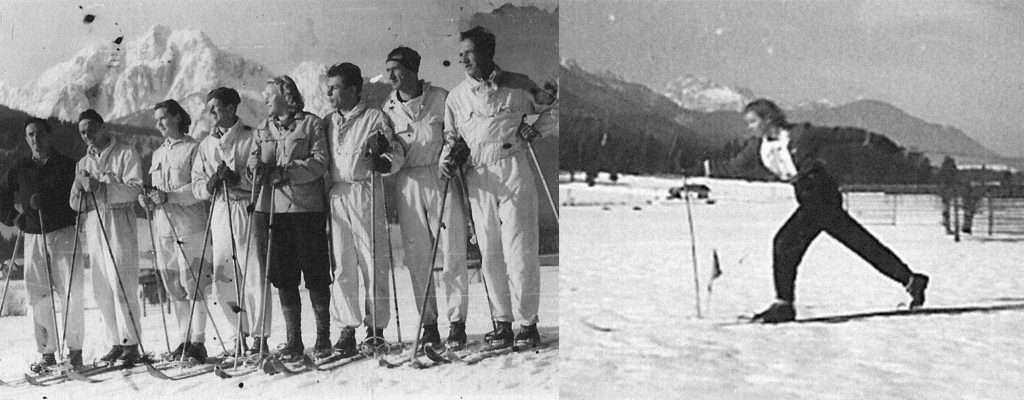
The first ski running competitions date back to 1926. They were extremely stressful, because they were held on a very difficult terrain with paths largely leading upward. The course ran from Rateče to Tamar and then back to Planica, with the finish line near the end of the jumping hill.
Beautiful nature and ideal conditions for winter sports activities were favourable elements to contribute to the idea of building a ski centre. In parallel with the development of sport, Planica became eye-catching for the tourists as well as for the lovers of nature and mountains.
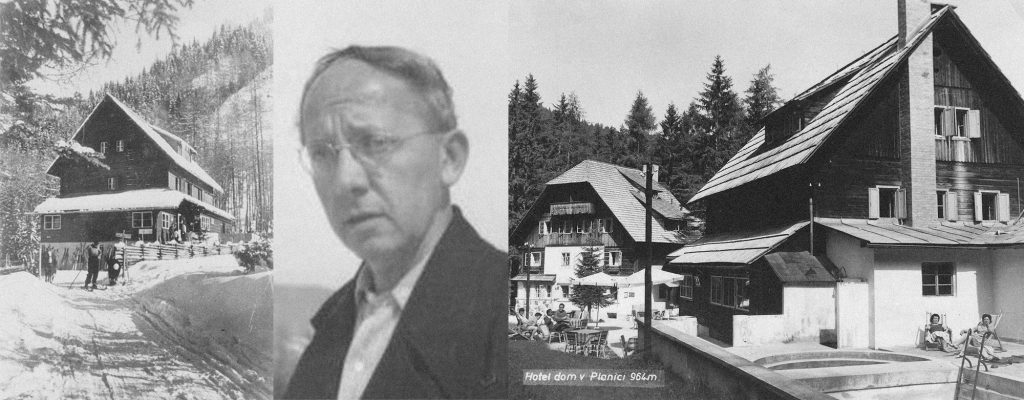
Due to favourable winter conditions and the proximity to the rail links leading to the the Sports Club (SKK Ilirija) in Ljubljana, the club decided decided to build a modern ski centre that would be operating all year round. The residential ski centre in Slatna near Planica was opened on 20 December 1931.
Soon after, Joso Gorec, a long-time Secretary General of the Yugoslav Winter-Sports Federation and hard-working ski coordinator recognized the potential of Planica. There were ideas about larger jumping hills suitable for organizing international competitions, including world championships.
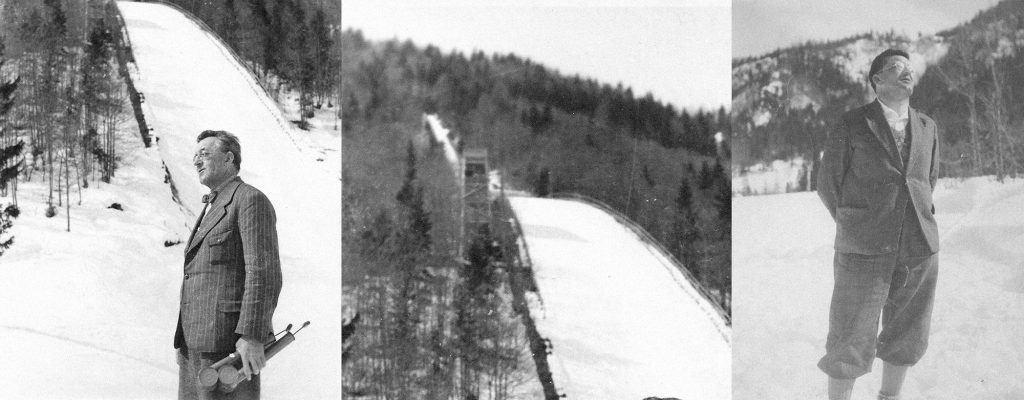
In the autumn of 1932, with the support of the municipality Rateče, the club Ilirija asked the administration board of the province of Ljubljana for the support in the construction of a new ski jumping hill. As there was no response, Stanko Bloudek rolled up his sleeves and went on with his plan. Despite the financial obstacles, it all started with the construction of a 70-metre ski jump.
In doing so, they helped him and Stane Miklavčič Pelan, with manual works, Janez Kerštjan – who was a native of Rateče, who eventually became true master.
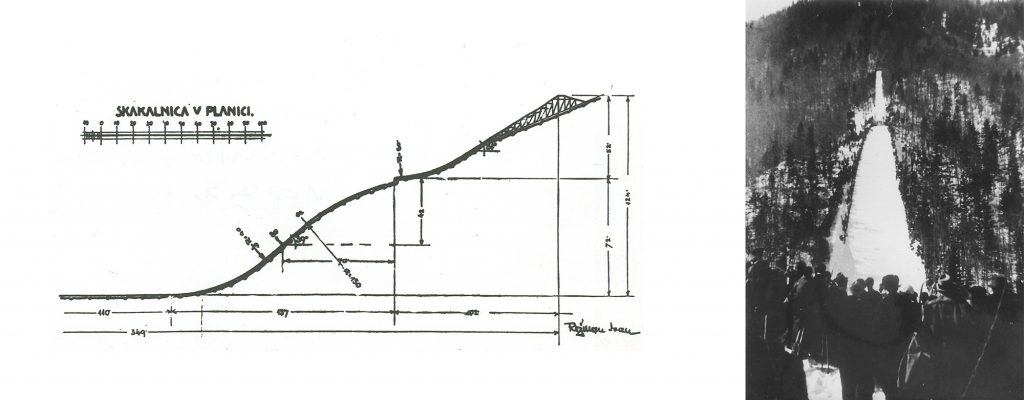
In 1933, Ivan Rožman from the Yugoslav Winter Sports Federation became one of the members of the Planica success story.
Enthusiastic Rožman took on Bloudek's task, set up the giant jumping hill, made some corrections and helped financially. The construction lasted from 28 October to 23 December.
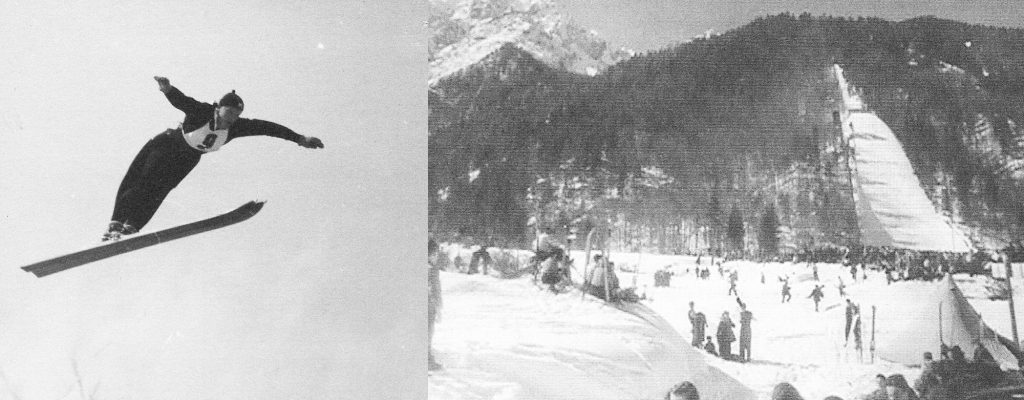
The 80-metre ski jumping hill hosted the National Championship for the first time on 4 February. The Slovenian Franc Palme was one to set a new national record - 60 metres. Soon after, the organizers began to wonder how the best ski jumpers would perform on the Bloudek-Rožman giant hill. A month later, on 25 March, they organized another competition - this time with all the world's aces, including the Norwegian jumpers.
The competition was saved from being affected by high temperatures with one of Rožman's inventions - probably the first form of snow cement. That day the Norwegian Birger Ruud set a new world record - 92 metres. Planica has since become a world famous attraction.
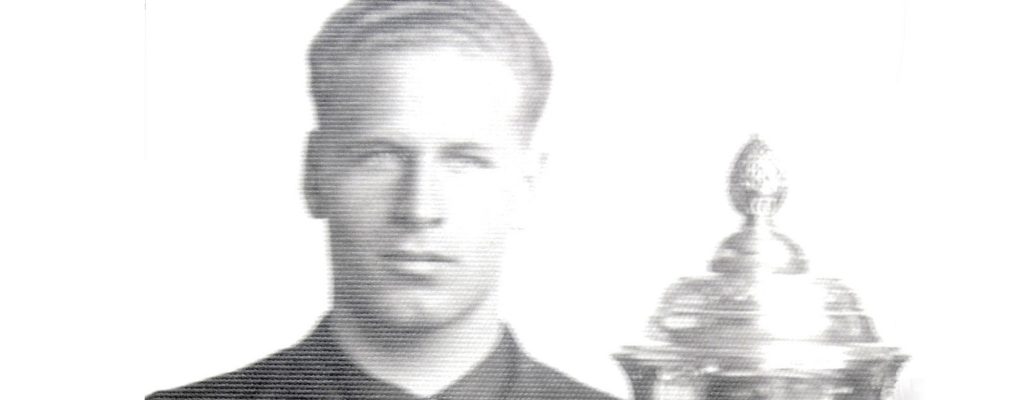
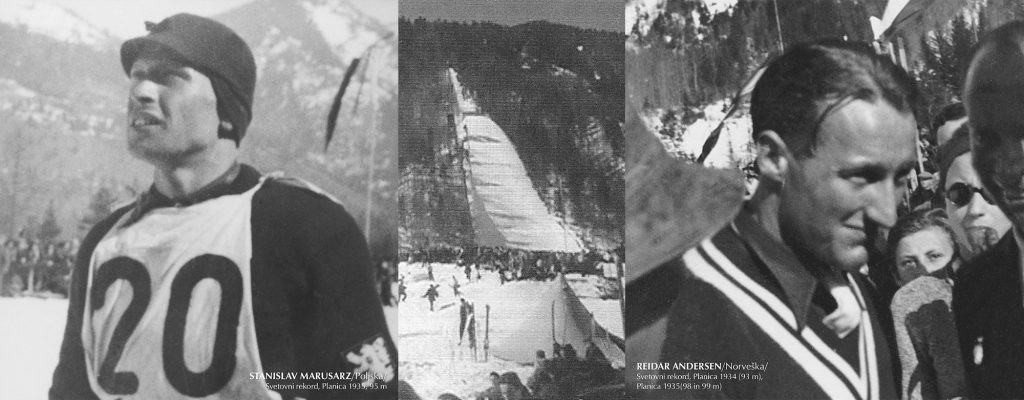
Despite financial problems Stanko Bloudek improvised with the snow profile a little and lifted the jumping hill. Although Planica then became the largest ski jump in the world, the Norwegian Ski Federation started to interfere in the development of ski jumping.
The best Norwegian jumper, Reidar Andersen, was a hair's breath away from reaching amazing on hundred metres and set a new record of 99 metres while training for the event in 1935. The Norwegians were then banned from attending the official competition by their federation, so the competition was won by a Polish skiing competitor, Stanislaw Marusarz.
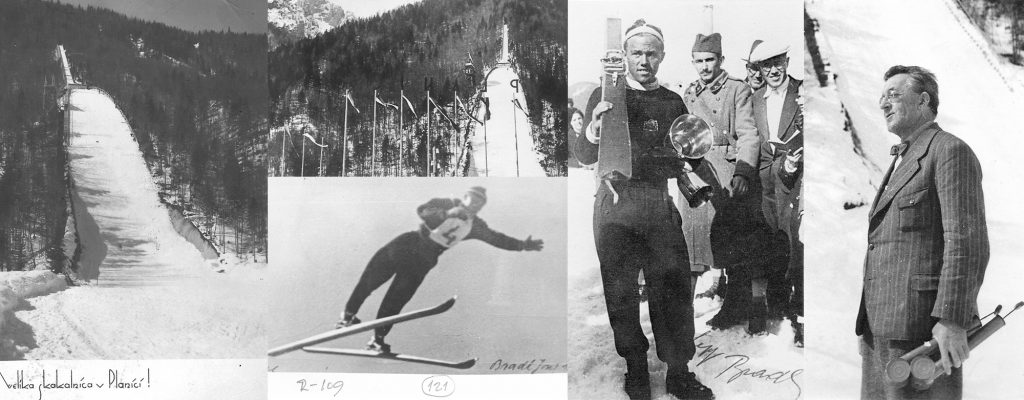
The newly established Planica Ski Association supported the construction of a major jumping hill. The financial difficulties were resolved at the last minute when the Chairman of the Executive Board of Planica Ski Association, Rado Hribar, made a donation. The ski jumping hill with a critical point length of 106 metres was completed on 2 March in difficult conditions.
On 15 March the competition already took place, however, this time without the Norwegians. And it was destined to happen barely turning 18, a young Austrian, Josef Bradl-Buwi, stole the show. As the first man to jump the distance of 101.5 metres, he topped the distance of one hundred metres and made history.
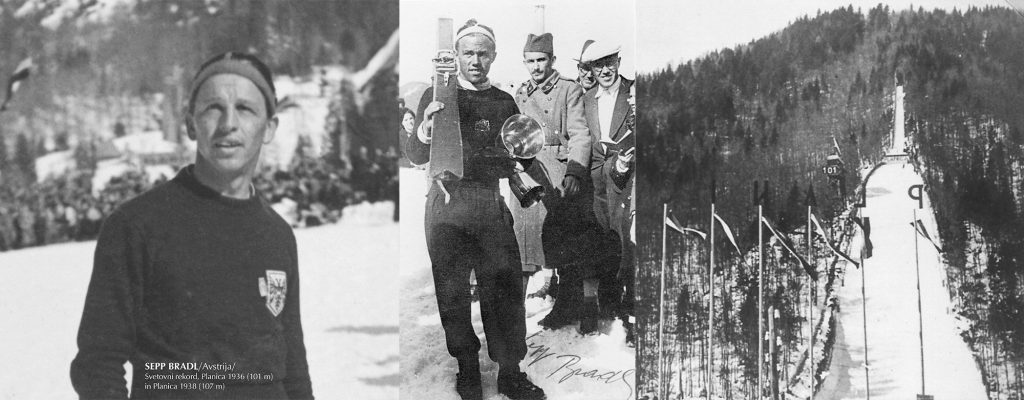
The Austrians again set the world record on 15 March - the jumping hill under the Ponce Mountains was on the world's radar once more.
Sepp Bradl, who became the first human being to jump over 100 metres in 1936, set the record of 107 metres 2 years later.
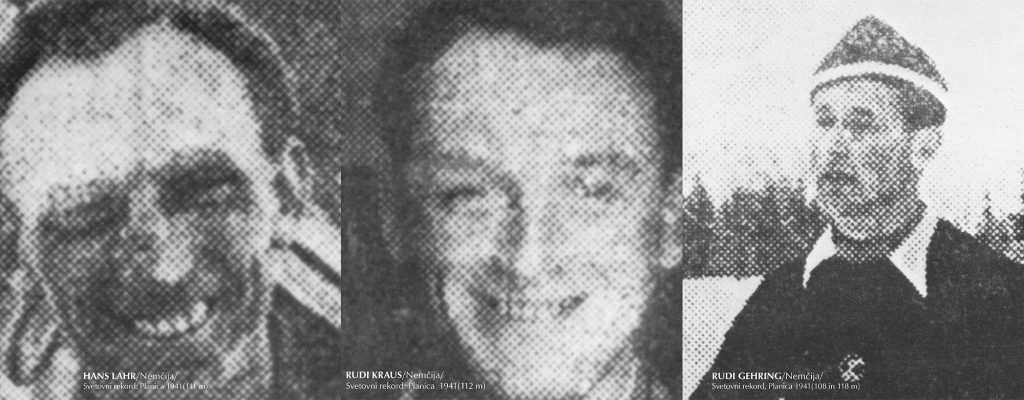
The date of 2 March was celebrated by a young German, Rudi Gering, who came close to the jumping hill's critical point of 120 metres by reaching the distance of 118 metres.
Among the heroes we can also count Rudi Finžgar (101 metres) and Albin Novšak (103 metres) since they set a new Yugoslavian record.
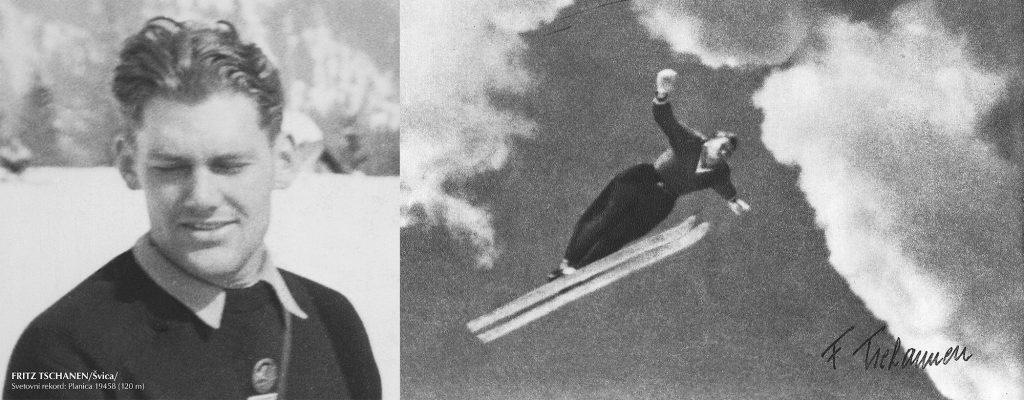
After the legendary jump of Sepp Bradl the »Bloudek's giant« witnessed 7 more world records. The record was set at 120 metres by a Swiss, Fritz Tschannen. The Bloudek giant has so far recorded a staggering 13 world records.
It took some time before ski jumping was recognized as an indipent discipline. In 1948, an expert for ski jumping from FIS first visited Planica. Based on his report, FIS changed their opinion and during the Planica week, ski jumping came under the direct control of the subcommittee for the jumps.
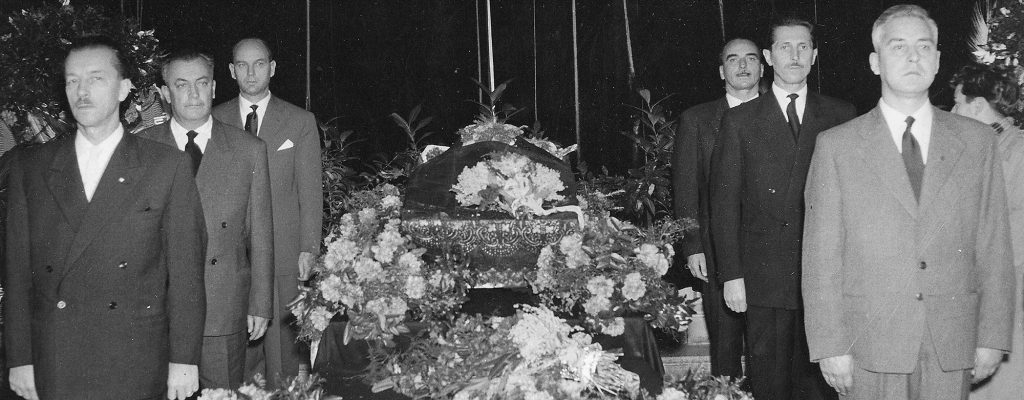

Bloudek was already thinking about a new 160 metre jumping hill, but unfortunately did not live to see it.
He died on 26 November.
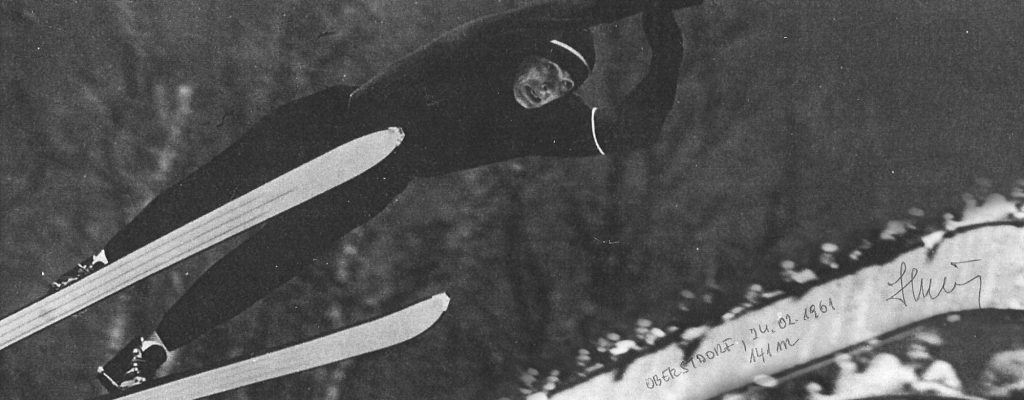
On 24 February on a German jumping hill in Oberstdorf, Jože Šilbar set a world record, at a distance of 141 metres.
He beat a ten-year-old record by a Finnish ski jumper Taun Luir, which he set on the same jumping hill.
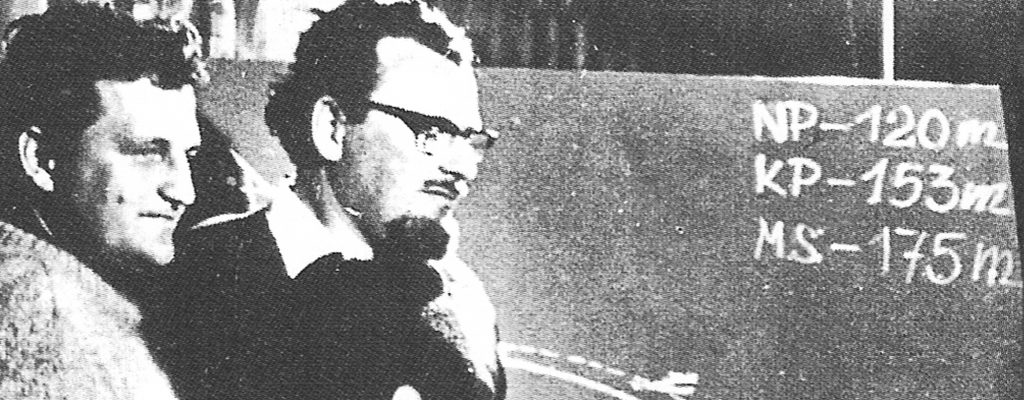
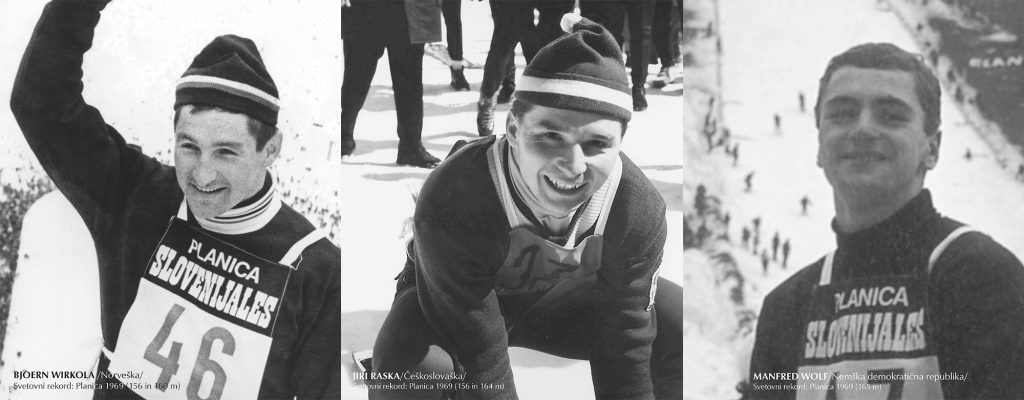
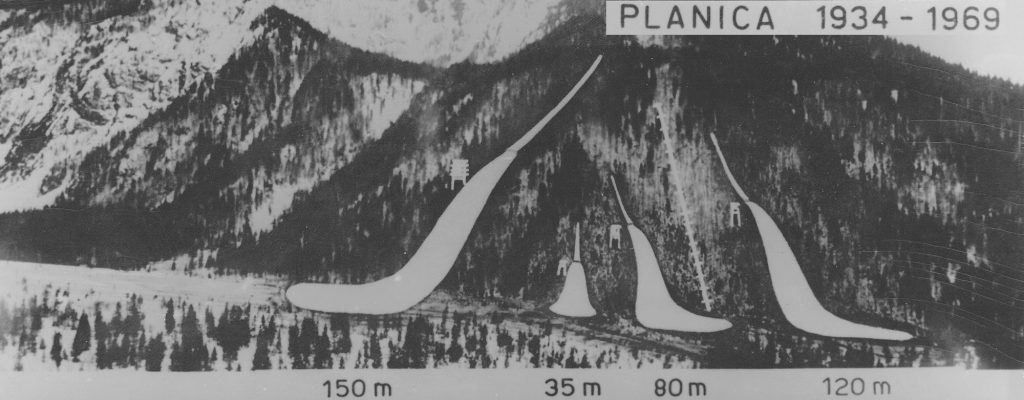
After Bloudek's death, new plans we being devised in Planica concerning the construction of a new ski jumping hill. Plans were discussed by Lado and Janez Gorišek, who designed »the giant« with the intention to possibly expand it in the future. Consequently, in 1969, the plan was carried out.
Days from 21 to 23 March were really memorable. That weekend, the highest number of world records in ski jumping was reached. The competition was celebrated by the Norwegian Bjørn Wirkola (156 and 160 metres), the Czech Jiří Raška (156 and 164 metres), and the German Manfred Wolf (165 metres). It was time for a new ski discipline to emerge - ski flying.
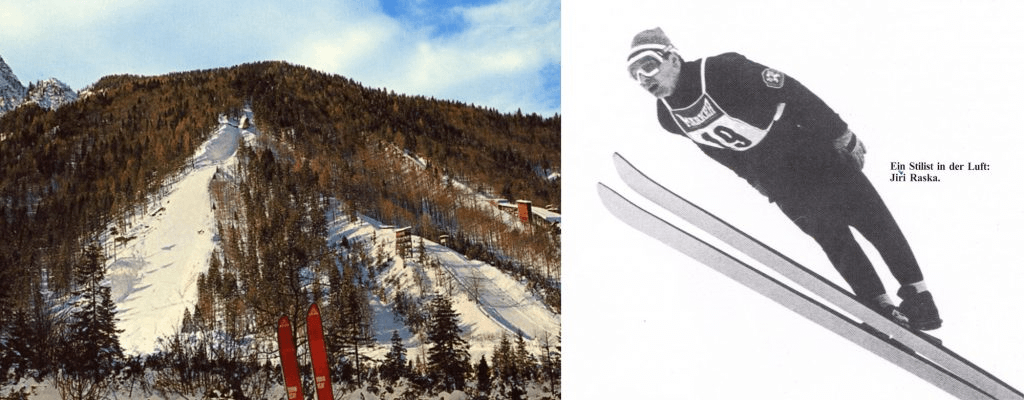
In 1971, FIS finally yielded and recognized the new ski discipline - flying. As a prize for pioneer work regarding ski jumping, Planica was appointed to organize the first World Cup.
The competition was won by a Swiss, Walter Steiner, while Peter Štefančič was the best native jumper who finished in 10th place.
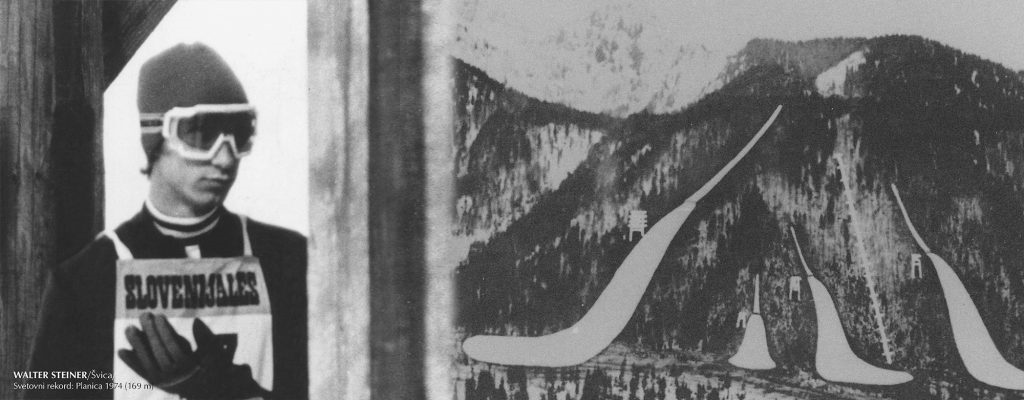
The event in Planica was marked by the 177-metre-long jump by Walter Steiner.
The exceptional length of the flight and the ideas it encouraged all led to an innovation in the design of the flying hill. It is the landing area with two slopes - the so-called Gorišek breaking point.
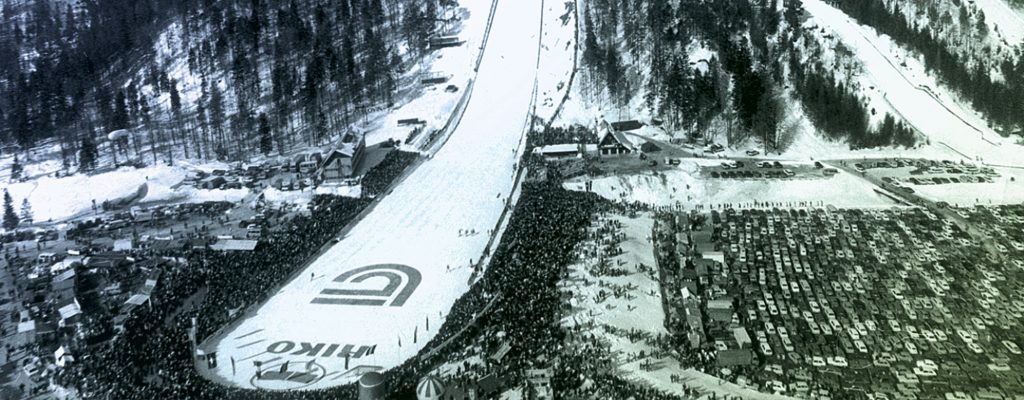
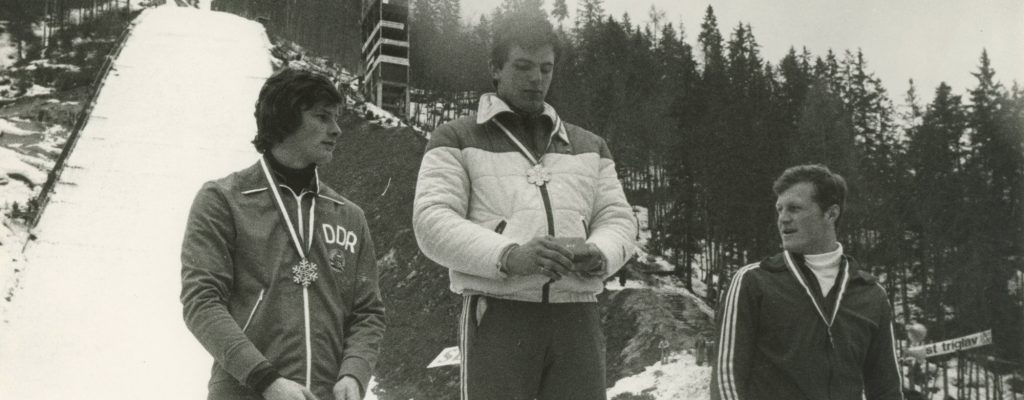
The Austrian Armin Kogler became the next world champion who was also announced the first World Cup winner.
In addition, the World Cup finals (on 15 March) were accompanied by the chorus of the song Planica performed by Slavko Avsenik.
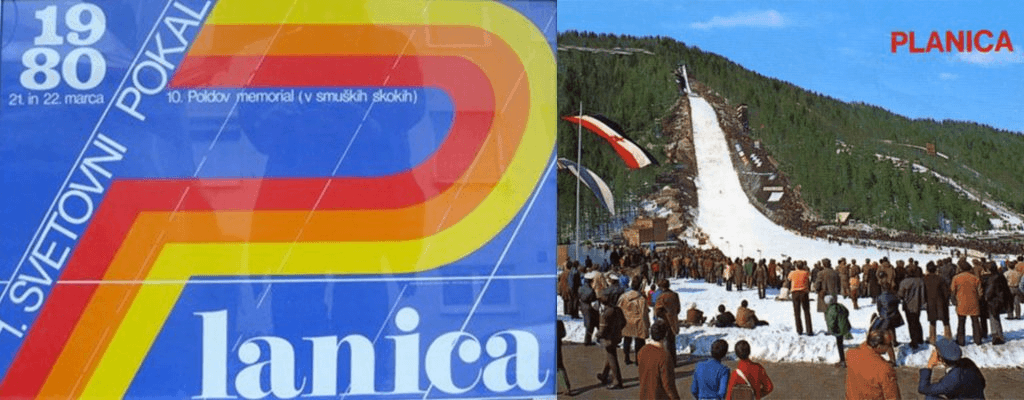
The courses for cross-country skiing were set within a triangle-like areas between Kranjska Gora, the old border at Rateče and Tamar. Only a few of the courses were certified internationally and only for certain disciplines of cross-country skiing.
The layout of the ski courses depended on natural snow conditions, which proved very difficult for cross-country ski competitors.
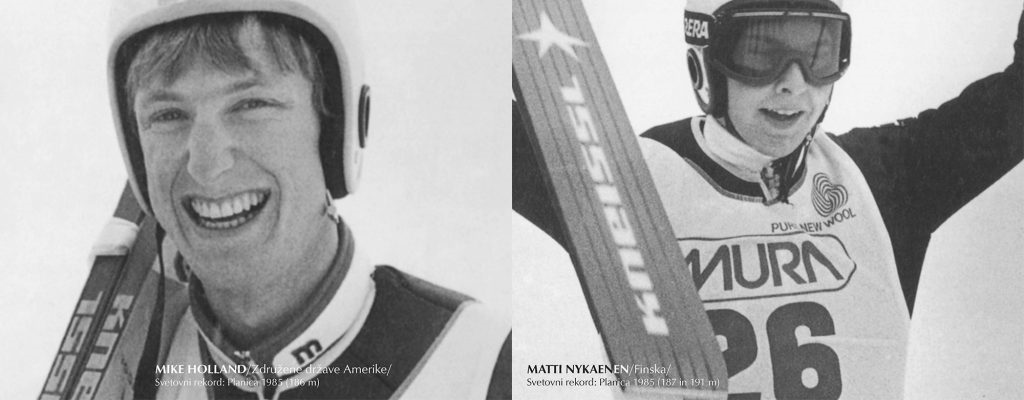
On Friday, 15 March, an official training was held, where three new records were set. In the first round of training, the record was set by the American Mike Holland at 186 metres, another two were set by the Finnish Matti Nykänen - first at 187 metres in the first round of training, and then 191 metres in the second.
The latter caused FIS to introduce the controversial rule of 191 metres and thus avoid aiming for a record distance. Rule was in use between years 1986 and 1994.
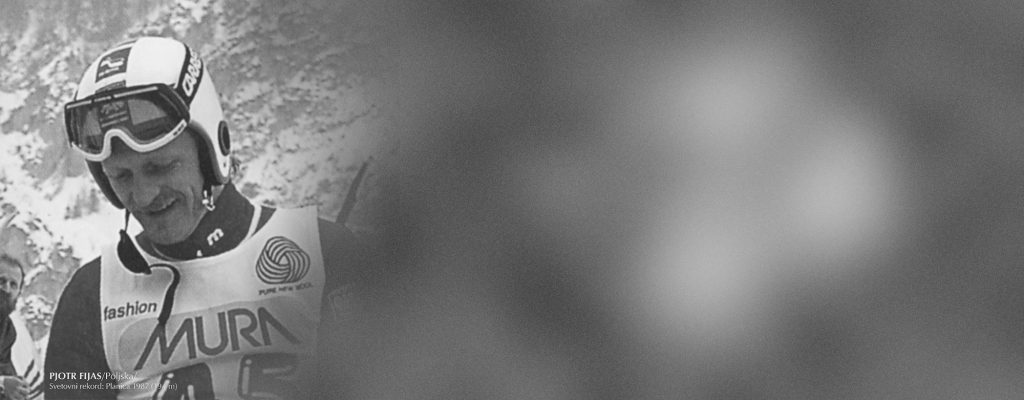
A Polish, Piotr Fijas, at the distance of 194 metres.
Since then Planica has always been the place to witness competitors setting world records.
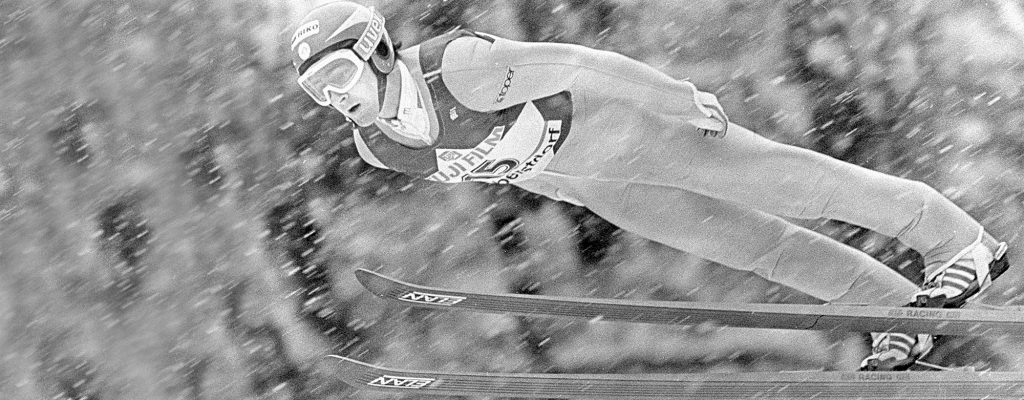
In 1988, Primož Ulaga made history in Planica.
As the first Slovenian who won in Planica - twice.
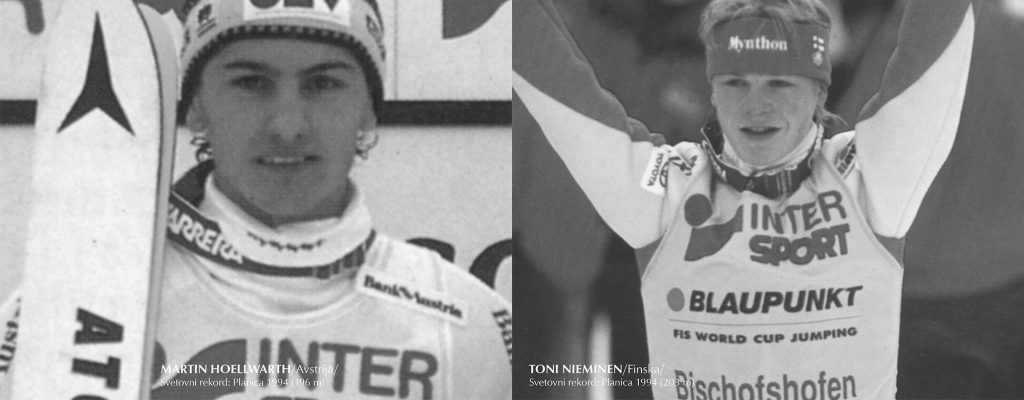
The 13th Ski Flying World Cup will always be remembered as one of the major ones.
A Finnish prodigy boy, Toni Nieminen was the first to fly over 200 metres (203 metres, to be exact) and thus shared the spotlight with Sepp Bradl.
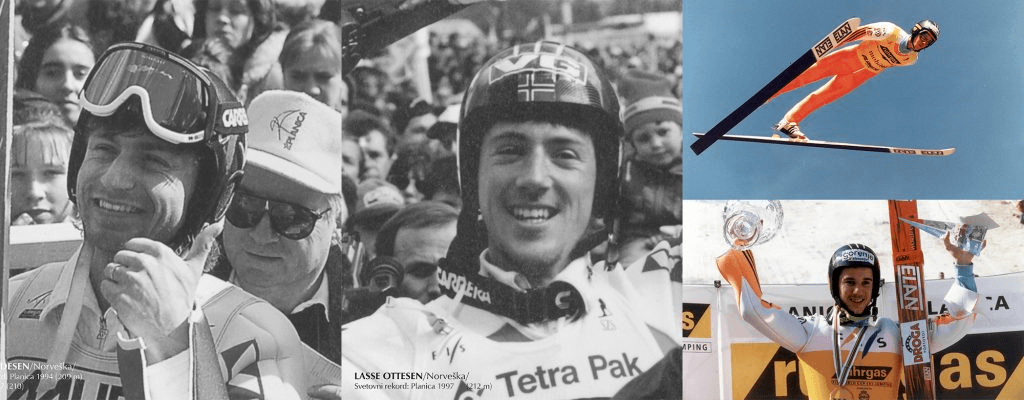
In addition to the two world records held by the Norwegians Bredesen (210 metres) and Lasse Ottesen (212 metres), Planica witnessed another milestone.
The first overall victory in the World Cup and the first Crystal Globe was obtained by Slovenia's Primož Peterka.

Peterka beat the Austrian Andreas Widhölzl and the Japanese Kazuyoshi Funaki in the competition for the overall victory in the World Cup
Therefore, he was the reason behind the festivities under the Ponce Mountains for the second time.
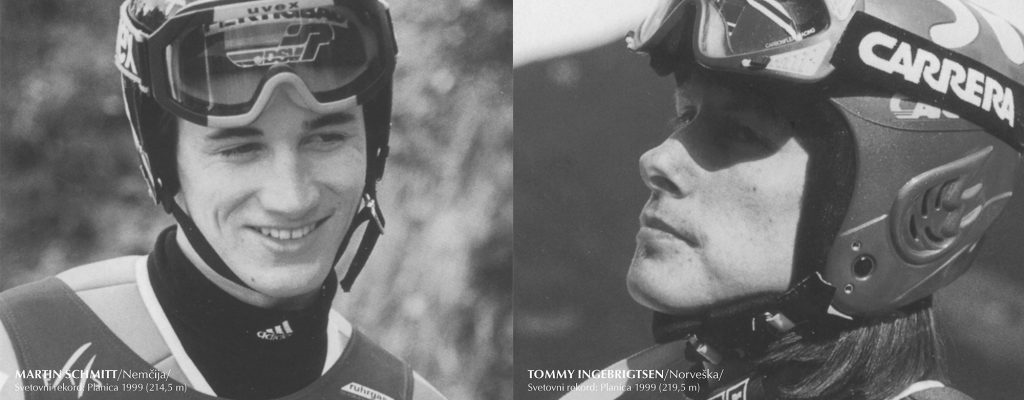
Since 1999, every year at the end of March, the ski flying competitions have been organized.
The Norwegian Tommy Ingebrigtsen set the record at 219.5 metres.
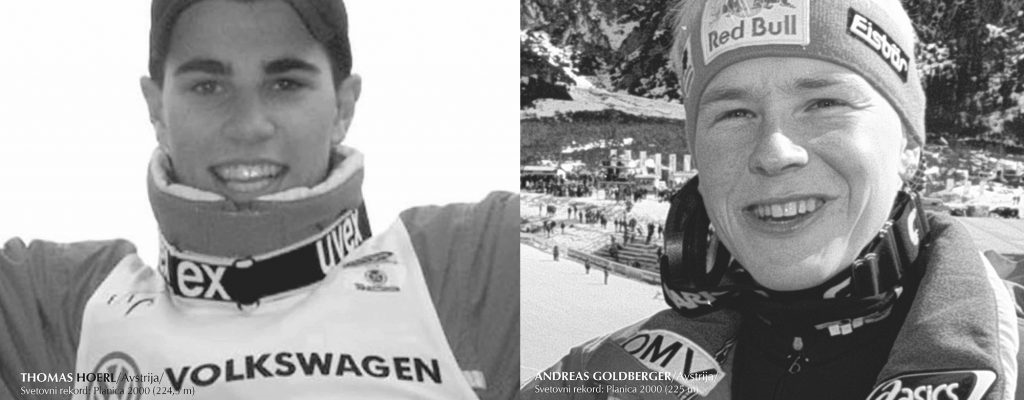
The Planica ski jump has always witnessed long flights. Since 2000, the first records have been set - breathtaking flights over 220 metres.
These record holders were the Austrians Andreas Goldberger (225 metres) and Thomas Hörl (224.5 metres), along with the Finnish Ville Kantee (223.5 metres).
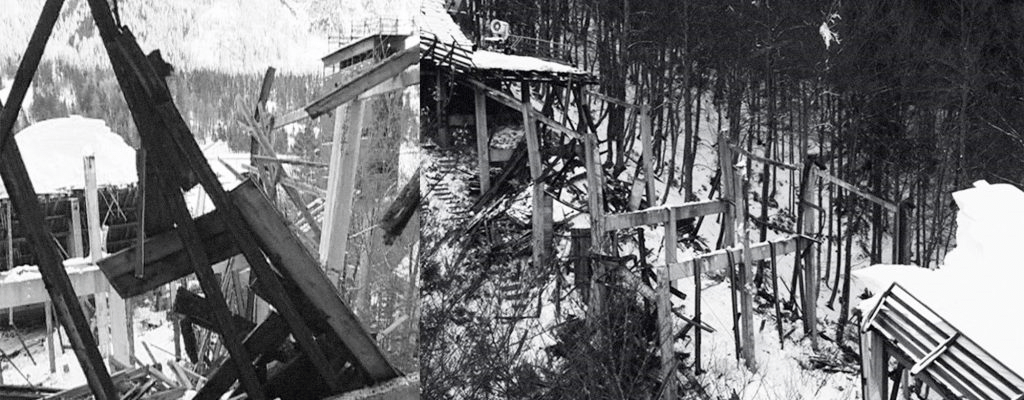
Setting world records and organizing annual events left Planica in a bad condition. Its maintenance depended solely on profit made during the event, but unfortunately it was not enough for its progress and development.
Also, it was maintained only to the extent that it was prepared for an event organized each year - this sooner or later led to its ruin. These dark times reached their peak in 2001, when the Bloudek giant collapsed under the weight of the snow.
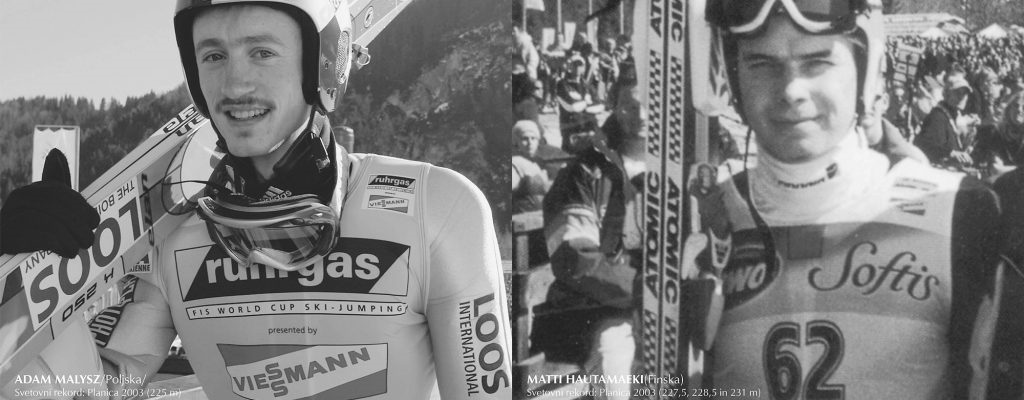
Due to favourable conditions, an excellent state of the jumping hill, the best arrangements of facilities alongside the outrun and the latest side profile of a ski jumping hill, Planica again exceeded all expectations.
The Finnish Matti Hautamäki set the record at the distances 227.5, 228.5 and 231 metres with great ease.

After World War II, the most prolific date in setting records was 20 March 2005 – with 4 new records. It all began during the rounds of training when Tommy Ingebrigtsen landed at 231 metres and 8 minutes later, Bjorn Einar Romoren jumped 234.5 metres.
Two more records were set in the final - the first record was set by Hautamäki (235.5 metres), but he lost it after 4 minutes when Romoren landed at 239 metres.
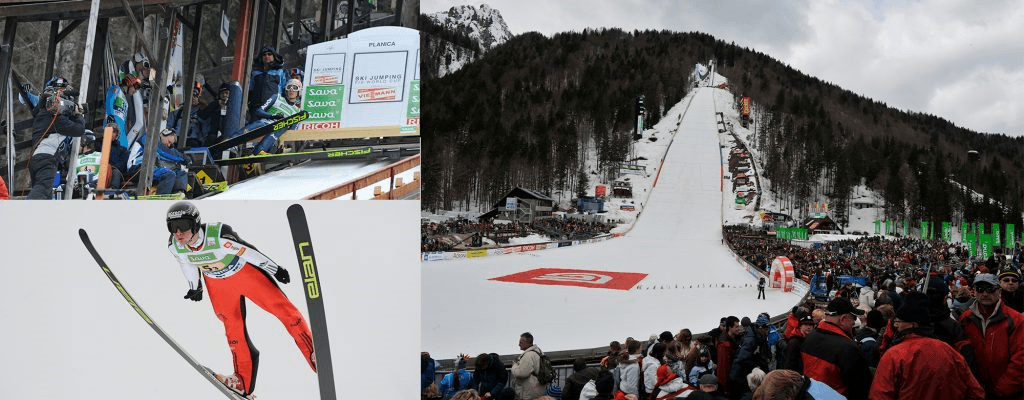
Friday's match was disrupted by the wind and there was only one round of flights. Gregor Schlierenzauer took the first place, second place went to by Harri Olli and third place to - the Slovenian Robert Kranjec.
After eight years of pause, this was the first season in which they awarded the athletes with the little Crystal Globes for this discipline.
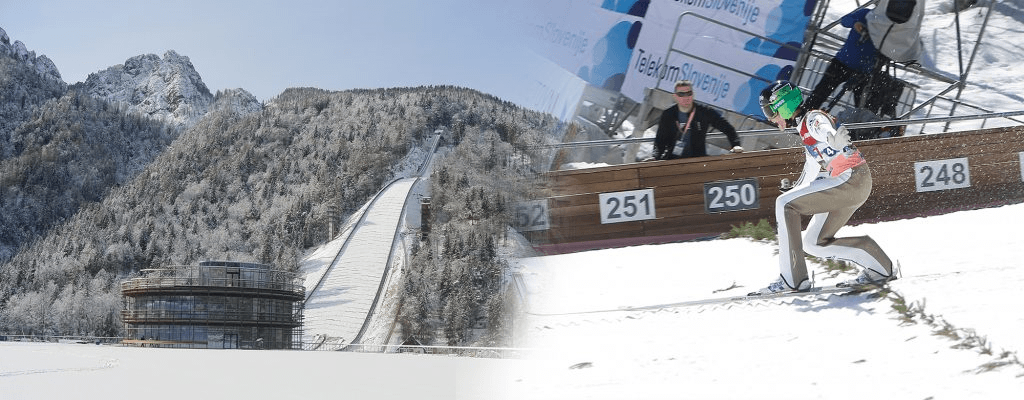
A staggering 250 metres have become the new frontier, reached by Peter Prevc in Vikersund.
Only a few weeks later, Prevc set a new record in Planica - 248.5 metres.

